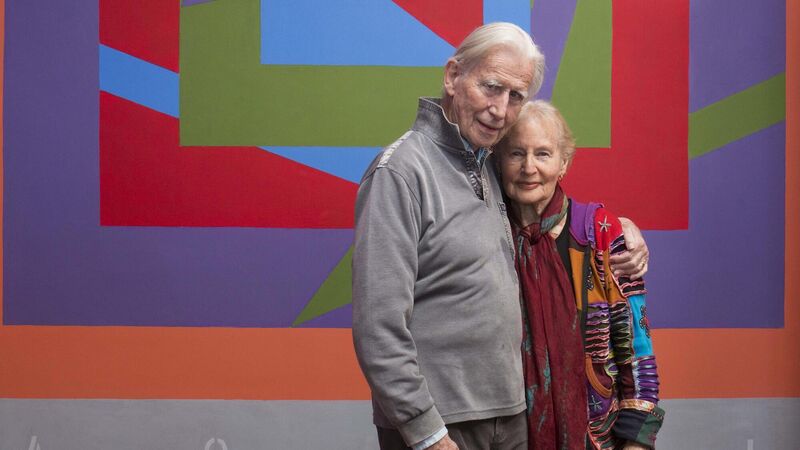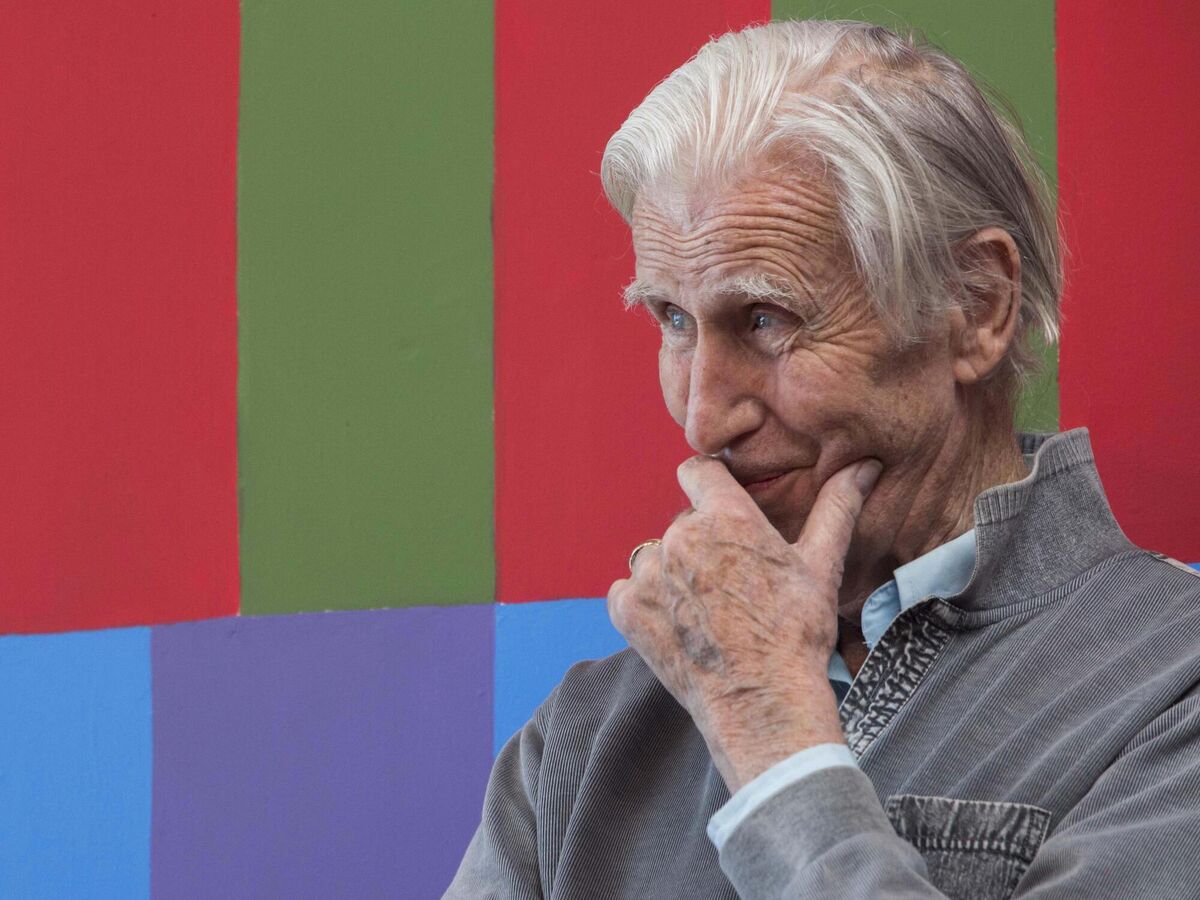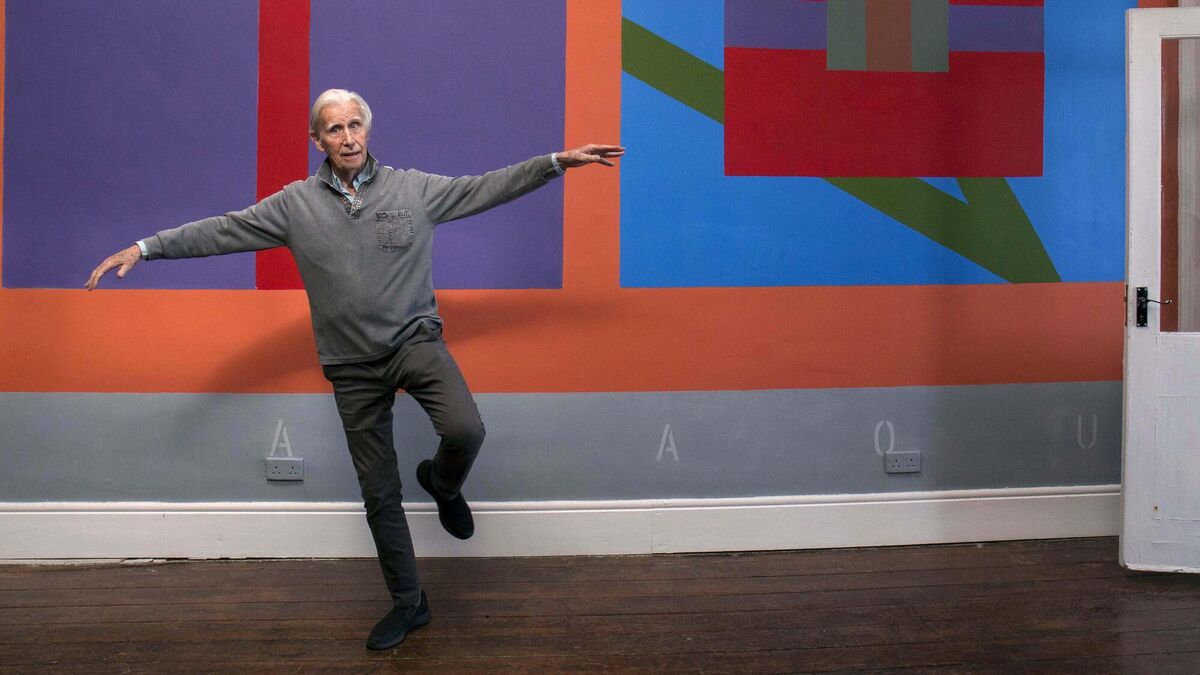Tributes paid on death of Brian O'Doherty, 'one of Ireland's most influential artists'

Brian O'Doherty (formerly known as Patrick Ireland) with his wife Barbara Novak at the Sirius Arts Centre in Cobh in 2018. Picture: Clare Keogh
Brian O’Doherty, who has died aged 94, was a native of Ballaghdereen, Co Roscommon, who found fame in America as an art critic, an artist, a television presenter, a filmmaker, an author and an educator. This all came after he first qualified as a medical doctor.
Born in 1928, O’Doherty studied medicine at University College Dublin before progressing to post-graduate studies at Cambridge University and Harvard School of Public Health, where he made an unlikely career change in 1957.
He had always loved art, and in Harvard he found himself being invited to present an arts interview programme on Boston public television, succeeding the art historian Barbara Novak, who later became his wife. Among those he interviewed were legends of the visual arts world such as Josef Albers, Marc Chagall and Walter Gropius.
O’Doherty and Novak moved to New York, where he established himself as an art critic for the New York Times. He also worked as an editor for specialist arts magazines such as Art in America and Aspen.
The Sirius Gallery was among those paying tribute to O’Doherty following the announcement of his death on Tuesday afternoon. “We are saddened by the news of the death of Brian O’Doherty, one of Ireland's most influential artists. We are honoured to have collaborated with him on the production of his outstanding mural One Here Now - the Ogham Cycle.”
O’Doherty’s best known book of art criticism is Inside the White Cube: The Ideology of the Gallery Space, published in 1976. His novels included The Strange Case of Mademoiselle P; The Deposition of Father McGreevy, which was nominated for the Booker Prize in 2000; and The Crossdresser’s Secret, published in 2014.

In New York in 1966, O’Doherty befriended the veteran conceptual artist Marcel Duchamp. After dinner one evening, he recorded Duchamp’s heartbeat, presenting the cardiogram as part of a sixteen-part artwork he called Portrait of Marcel Duchamp.
O’Doherty had an insatiable curiosity about the human condition, matched by an immense capacity for work. He drew, painted, took photographs and made films, and created installations in art galleries around the world. Some of the best known were ‘rope drawings’, works in which he painted the gallery walls and ceilings.
In 1972, protesting the massacre of civilians by British soldiers in Derry on Bloody Sunday, he assumed the pseudonym Patrick Ireland at a ceremony held as part of the Irish Exhibition of Living Art in Dublin. It was, he acknowledged, the gesture of an exile, but he resolved to sign all his artwork with the pseudonym “until such time as the British military presence is removed from Northern Ireland.”
O’Doherty was true to his word. It was not until May 20, 2008, that he buried an effigy of Patrick Ireland in an elaborate ceremony on the grounds of the Irish Museum of Modern Art in Dublin, and resumed signing his artworks under his birth name.
O’Doherty’s last major project in Ireland was Be Here Now in 2018, spearheaded by Miranda Driscoll, the then director of Sirius Arts Centre in Cobh. O’Doherty and Novak had undertaken a residency in Sirius in 1995/96, and he had used much of the time to create a series of remarkable murals, inspired by Ogham script, all over the gallery walls. Cobh had been the point of departure for O’Doherty when he left Ireland for America nearly forty years before.
The murals remained in place for a year before being covered up with heavy duty wallpaper to facilitate the gallery’s exhibition programme. On taking the reins at Sirius in 2014, Driscoll discovered the murals were still intact. With O’Doherty’s support, she oversaw a restoration and conservation project which saw them being revealed once more.

O’Doherty and Novak flew in from New York for the unveiling, which coincided with his 90th birthday on April 20, 2018. One Here Now featured a year-long programme of events, including a public interview with O’Doherty, exhibitions and musical performances. The murals were then covered up again, this time with protective walls that should facilitate their exposure at some other point in the future.
O’Doherty had suffered at least one stroke in recent years. It was reported that he had died in New York. He is survived by Novak. The couple had no children.
Fiona Kearney, director of the Glucksman Museum in Cork, has paid tribute to the late artist: “Brian O’Doherty was an irrepressible provocateur in art and life and a joy to work with.”
Mary McCarthy, director of the Crawford Gallery, said: "He has had a profound effect on a generation of us, with his art, writings, film and performances. We are at Crawford grateful to Miranda Driscoll, former director of Sirius Art Centre for bringing him to the Gallery in 2018. We will remember him for his work, but we also remember him for his wicked sense of humour, his warmth, kindness and most of all, attentiveness to all of us."




